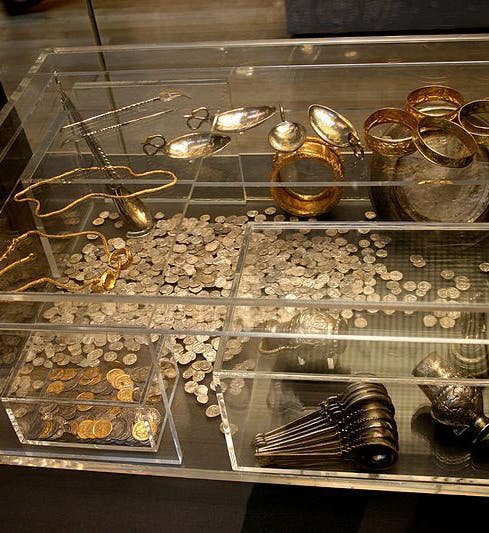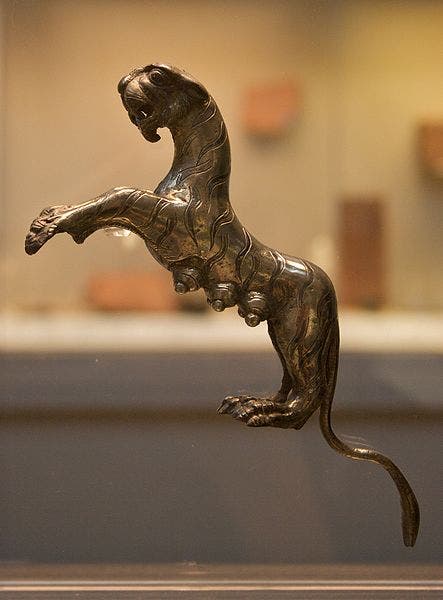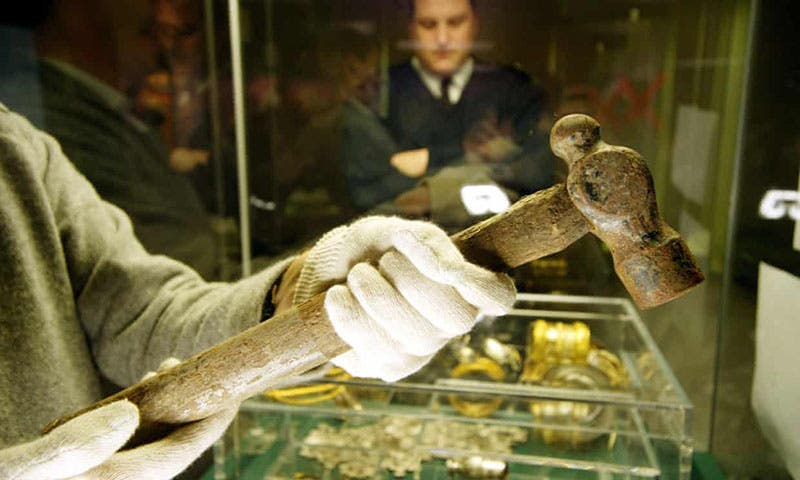Scientist of the Day - Eric Lawes
Eric Lawes was a retired utility board worker, living in Hoxne in Suffolk, England, who received a metal detector as a retirement present. On Nov. 16, 1992, Lawes was using his detector to look for a hammer that a tenant-farmer friend had lost in a field, when he detected and dug up several ancient coins and spoons. These were the first traces of what has come to be known as the Hoxne Hoard. It is the largest collection of treasure from Roman times that has ever been found in Great Britain, nearly 15,000 coins and other gold and silver items, worth about £3.5 million and now on display in the British Museum.
Lawes earned his right to be a Scientist of the Day because of what he did next, after he found the first few coins. Instead of digging further, in quest of the treasure that was surely there, he backed off and called in the Suffolk Archaeological Unit. As a result, the site was excavated properly, so we know exactly where each of the 15,000 artifacts was found, and it has even been possible to reconstruct the wooden case that held them and the way the objects were arranged in the case. And in the process, Lawes brought a new respectability to the metal detector. Before Lawes, archaeologists had a very low opinion of wielders of metal detectors, calling them "coin shooters" or "nighthawks,” because they short-circuited legitimate archaeological investigations by plundering treasure locations. With Lawes, we finally had a metal detector user who did the right thing and saved an entire site.
Lawes received two rewards for his responsible actions. One was fiduciary: a finder’s reward of £1.75 million, which he split with the tenant-farmer. But the other was perhaps just as welcome; he was given a title, metal detectorist. This is a common phrase now, but as best I can determine, the label was first used when archaeologists and the press, perhaps unconsciously, sought to give Lawes a professional label to reward his professionalism in the field. And “metal detectorist” certainly has a distinctive ring. I used to be much opposed to titles like this, the equivalent of calling a check-out clerk a “laser scanning technician,” but in Lawes’ case, it was a title well-earned, and well-coined, if one might use the phrase.
The photo of Lawes comes from a memorial essay in The Guardian in 2015. The Hoxne tigress (third image) is the most picturesque of all the Hoxne items, even though it is just a handle from a vessel now lost.
Dr. William B. Ashworth, Jr., Consultant for the History of Science, Linda Hall Library and Associate Professor, Department of History, University of Missouri-Kansas City. Comments or corrections are welcome; please direct to ashworthw@umkc.edu.










